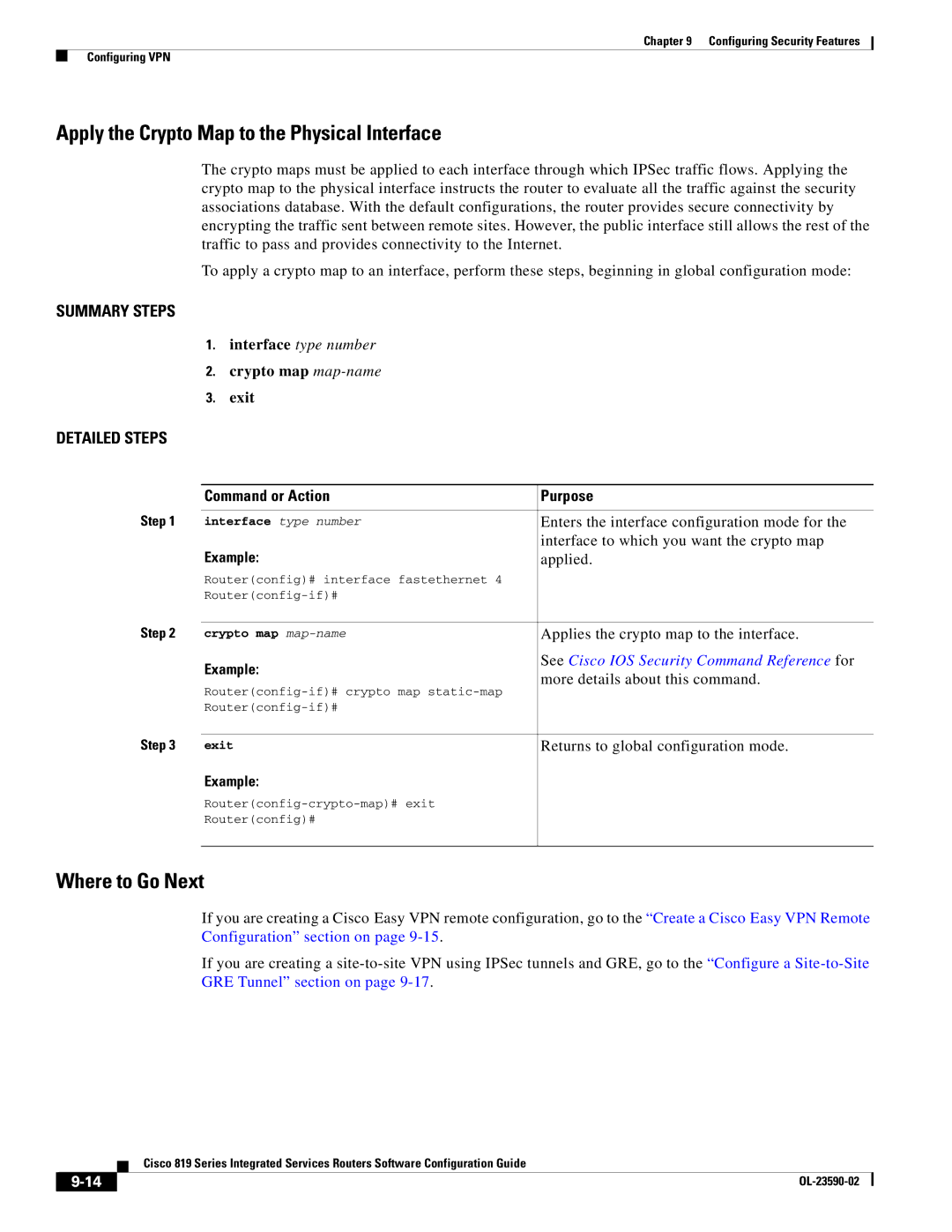
Chapter 9 Configuring Security Features
Configuring VPN
Apply the Crypto Map to the Physical Interface
The crypto maps must be applied to each interface through which IPSec traffic flows. Applying the crypto map to the physical interface instructs the router to evaluate all the traffic against the security associations database. With the default configurations, the router provides secure connectivity by encrypting the traffic sent between remote sites. However, the public interface still allows the rest of the traffic to pass and provides connectivity to the Internet.
To apply a crypto map to an interface, perform these steps, beginning in global configuration mode:
SUMMARY STEPS
1.interface type number
2.crypto map map-name
3.exit
DETAILED STEPS
| Command or Action | Purpose |
Step 1 |
|
|
interface type number | Enters the interface configuration mode for the | |
| Example: | interface to which you want the crypto map |
| applied. | |
| Router(config)# interface fastethernet 4 |
|
|
| |
Step 2 |
|
|
crypto map | Applies the crypto map to the interface. | |
| Example: | See Cisco IOS Security Command Reference for |
| more details about this command. | |
| ||
|
| |
|
| |
Step 3 |
|
|
exit | Returns to global configuration mode. | |
| Example: |
|
|
| |
| Router(config)# |
|
|
|
|
Where to Go Next
If you are creating a Cisco Easy VPN remote configuration, go to the “Create a Cisco Easy VPN Remote Configuration” section on page
If you are creating a
| Cisco 819 Series Integrated Services Routers Software Configuration Guide |
|
